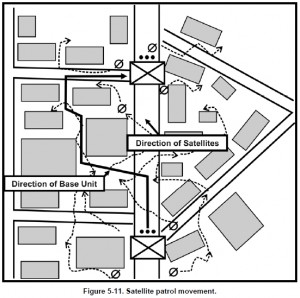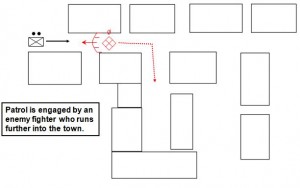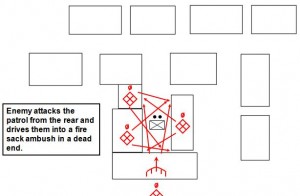Chairman of the Joint Chiefs of Staff criticizes air strikes:
The United States cannot succeed in Afghanistan if the American military keeps killing Afghan civilians, Adm. Mike Mullen, the chairman of the Joint Chiefs of Staff, said on Monday.
In remarks to scholars, national security experts and the media at the Brookings Institution, Admiral Mullen said that the American air strikes that killed an undetermined number of civilians in Afghanistan’s Farah Province two weeks ago had put the U.S. strategy in the country in jeopardy.
“We cannot succeed in Afghanistan or anywhere else, but let’s talk specifically about Afghanistan, by killing Afghan civilians,” Admiral Mullen said, adding that “we can’t keep going through incidents like this and expect the strategy to work.”
At the same time, Admiral Mullen said, “we can’t tie our troops’ hands behind their backs.”
Admiral Mullen’s comments on the civilian casualties from the Farah air strikes, which have caused an uproar in Afghanistan, reflect deep concern within the Pentagon about the intensifying criticism from Kabul against the American military. Admiral Mullen, who noted that commanders in the region had in recent months imposed more restrictive rules on air strikes to avoid civilian casualties, offered no new solutions in his remarks. He only said that “we’ve got to be very, very focused on making sure that we proceed deliberately, that we know who the enemy is.”
By midafternoon on May 4, after a battle between Afghan police and army forces and Taliban fighters had raged for hours, Marines Special Operations forces called in air strikes.
Three F-18 fighter-bombers, flying in succession over several hours, dropped a total of five laser-guided and satellite guided bombs against Taliban fighters who were firing at the American and Afghan forces, said the official, Col. Gregory Julian, in an email message late Sunday.
Villagers, however, have reported that an even heavier bombardment came after 8 p.m. when they said the fighting appeared to be over and the Taliban had left the village.
The military has disputed this version of events, saying the Taliban fighters continued to fire at American and Afghan troops, requiring additional air strikes. These came from a B-1 bomber, which dropped three 500-pound satellite-guided bombs on a tree grove, four 500-pound and 2,000-pound satellite-guided bombs on one building, and one 2,000-pound satellite-guided bomb on a second building, Colonel Julian said. Villagers have said they sought safety from the initial air strikes in a compound of buildings, but it was not clear whether these were the same buildings the American aircraft later bombed. Villagers said the bombings were so powerful that people were ripped to shreds. Survivors said they collected only pieces of bodies.
In all, Colonel Julian said, eight targets were attacked over a seven-hour period, but he denied reports from villagers that a mosque had been damaged in the strikes. Colonel Julian and other American military officials have said that the Taliban deliberately fired at American and Afghan forces from the rooftops of buildings where civilians, including women and children, had sought shelter, to provoke a heavy American military response.
Colonel Julian said at the peak of the fighting that day, some 150 Afghan soldiers and 60 Afghan police, along with their 30 American trainers, as well as two Marine Special Operations teams that made up a quick-reaction force, were battling about 300 militants, including a large number of foreign fighters.
Afghan government officials have accepted handwritten lists compiled by the villagers of 147 dead civilians. An independent Afghan human rights group said it had accounts from interviews of 117 dead. American officials say that even 100 is an exaggeration but have yet to issue their own count.
Analysis & Commentary
There remains an uproar over this incident because of noncombatant casualties, and some of it even over military analysis web sites. The focus of much of the discussion is on how counterinsurgency cannot succeed with noncombatant casualties, and that successful counterinsurgency must be population centric. True enough within context, this point misses the mark by a wide margin and succeeds only in parroting doctrinal talking points without a true understanding of what this incident can tell us about the campaign.
Regular readers of The Captain’s Journal can do better. Be circumspect, smart and deliberate, and consider the question of what we might learn from this incident? Considering the recent few months of the campaign, what information may we cobble together to place this incident within its proper context? How can we avoid the traps into which most apparatchiks fall, of advocating either bombing them into submission or implementing procedures to avoid noncombatant casualties altogether because it isn’t “population centric?”
First of all, there is no doubt that fathers and mothers of children who have perished, or children of fathers or mothers or siblings who have perished at the hands of U.S. military action, intentional or not, will forever be our enemies. It is understandable, and would be the same with most readers. Noncombatant casualties makes enemies.
Of course, many things make enemies, including promises to stop the Taliban and failing to meet those promises. But in this case there is something deeper going on, something that requires a bit of thought and trending.
In the Battle of Wanat where nine U.S. Soldiers perished and twenty seven were wounded, the Taliban massed some 300 or more fighters at one time in the area. Were it not for Close Combat Aviation (CCA) and Close Air Support (CAS), the casualty rate would have been even higher. Vehicle Patrol Base Wanat and Observation Post Top Side were what one might consider “far flung.” It was an area of operation that had heretofore not seen U.S. troops, but in which the Taliban were numerous and Taliban control unquestioned.
When the 26th Marine Expeditionary Unit was deployed to the Garmser region of the Helmand Province in 2008, they killed approximately 400 Taliban who had massed in Garmser, at times calling their fire fights “full bore reloading.”
In Marines, Taliban and Tactics, Techniques and Procedures, we covered the exploits of one Force Recon platoon who documented the fact that in their engagements with the Taliban the enemy fighters swelled to over 400 during ambushes and even during Taliban attacks on Forward Operating Bases. This is remarkable. This is basically half a Battalion of Taliban forces conducting what Force Recon called very good infantry tactics, including enfilade and interlocking fires, combined arms, and all of the other infantry tactics on which most good infantry is trained.
Finally, in Trouble in the Afghan Army: The Battle of Bari Alai we discussed the probable treachery of the Afghan Army during a Taliban attack on Observation Post Bari Alai in which three U.S. Soldiers perished along with two Latvian Soldiers. More than 100 Taliban fighters massed for the attack on the Observation Post.
Now go back and study the report above that has Admiral Mullen so concerned. The Taliban massed approximately 300 fighters for the fire fight with what turns out to be a fairly small U.S. force. They had Afghan troops alongside, but as we learned at Wanat, no Afghan troops perished that fateful night. The Afghan Army is shot through with drug abuse, and during the fight for Observation Post Bari Ala, it is believed that the Afghan troops laid down their weapons in a pre-arranged agreement with the Taliban.
Actually, a bit of study yields the conclusion that the Taliban have always wanted to mass troops (2005 report):
As the Taliban start shooting, O’Neal’s platoon scurries for cover. But there’s no panic. “They think, without a doubt, they have us outnumbered,” recalls O’Neal, a native of Jeannette, Pa., and leader of 2nd Platoon, Chosen Company. “We’ve got only 23 people on the ground, and I would say the Taliban had over 150 before the day was over” …
Taliban fighters, meanwhile, appear to gain courage from numbers, the ability to swarm a smaller enemy unit. A sense of safety in numbers, however, is often the Taliban’s undoing if a US platoon can fix an enemy’s position long enough for aircraft or other infantry units to arrive. This is the backbone of US military strategy in Zabul, and one reason why the Taliban have lost so many fighters this year.
It is fairly well known now that the additional troops deployed to Afghanistan are going to the population centers around Kabul and Kandahar – of course, in a tip of the hat to population centric counterinsurgency doctrine. So the balance of Afghanistan is left to the Taliban to raise revenue, recruit fighters, train, interdict our logistics lines, implement their governance and basically control as they see fit.
Then, since the U.S. is massing troops in and around the population centers, far fewer are left for the rural terrain. The most that can usually be accomplished is squad, platoon and company-sized engagements, or even smaller units to embed with the Afghan forces. This is very close to what is considered distributed operations. Few patrols in Taliban-controlled areas, no ensuring that the Taliban feel the strong presence of forces, just bare minimum to “train” the Afghan forces.
Yet when the Taliban are able to mass forces of as much as half a Battalion, the expectation is that much smaller units of U.S. forces will engage them without causing noncombatant casualties, while at the same time, the Taliban are clearly using human shields.
Clearly, we are asking the impossible of U.S. troops. The Obama administration doesn’t want to deploy more than about 68,000 U.S. troops to the theater, and as long as this small footprint obtains, heavy use of air power will be necessary to keep smaller units from being completely overrun when the Taliban mass troops.
There is a solution to this dilemma, but it requires more troops to disengage the Taliban from the population. The number of troops we have at the moment is not enough to do this mission. Hence, while noncombatant casualties are a sad thing and certainly counterproductive, the answer is not to inform the smaller units of U.S. forces that they cannot use air support. As much as The Captain’s Journal hates to see noncombatant casualties, more Marines and Soldiers in coffins would be much worse.







